-
Posts
6,860 -
Joined
-
Last visited
Content Type
Profiles
Forums
Gallery
Events
Articles
Posts posted by gxseries
-
-
Thought I'll make this into a postcard format and see how it looks like. Doesn't look too bad in this format to be honest. Bought most of them before the prices went out of control for them.

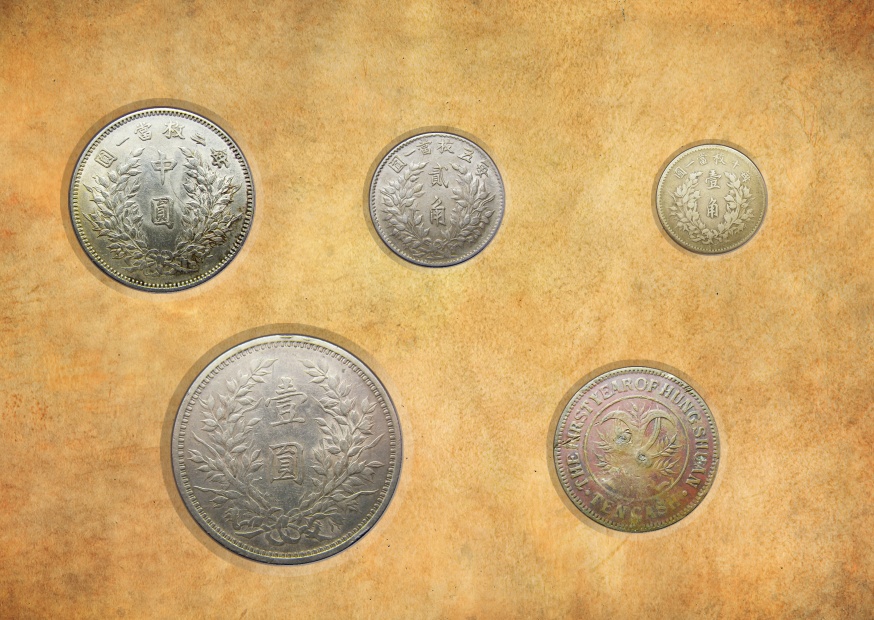
-
If the authors are talking about overdates of 1788 / 7, then yes, they do exist.
However I really doubt if there was a need to overstrike. When I was looking into the history of overstrikes and thought TM played a role in overstriking, I did some research and had to think twice. Understandably in 1788 when SPB and MM were busy overstriking coins to get rid of the older circulating coins, I struggle to understand why there was a need to setup a brand new mint in Feodosia where it would have been cheaper to import coins from other regions. There could be examples of overstruck TM coins over the older Crimean coinage as the plachets were imported from Russia if I am not wrong. However I haven't seen any yet. This said, TM coins look kinda similar to coins struck in Sestroretsk mint - I just can't explain why.
This could be a good place to start: http://en.museum-of-money.org/view/crimean-tatar_period_of_dependence_on_russia_1777_1783/
I suspect after Russia conquered Crimea in 1783, there might have been a strong need to set up a mint in Feodosia for propaganda purposes. Otherwise, why would there be a need to trial silver coinage that is unique to the Tauric mint? Why did it run for just couple of years? If it was too expensive and that was the reason for closure, why was it setup in the first place?
-
As we may be hearing - Malaysia unfortunately hit by bad news for the past few months. While there's little we can do other than pray for their loved ones, I thought we might as well share some numismatics side of Malaysia. I have been to Malaysia a long time ago and thought it's a pretty cool place.
Here's some to start off with - starting from the early days of Straits Settlement to more modern coins:
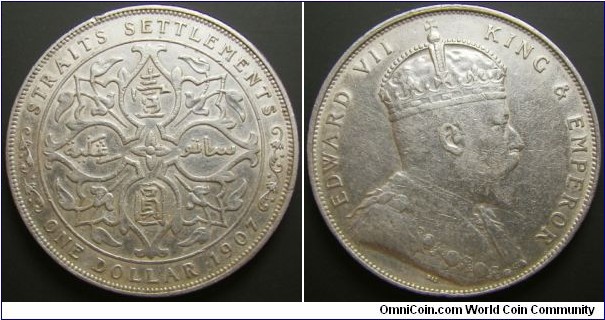
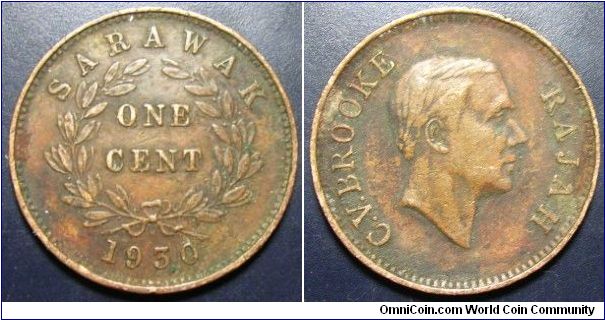
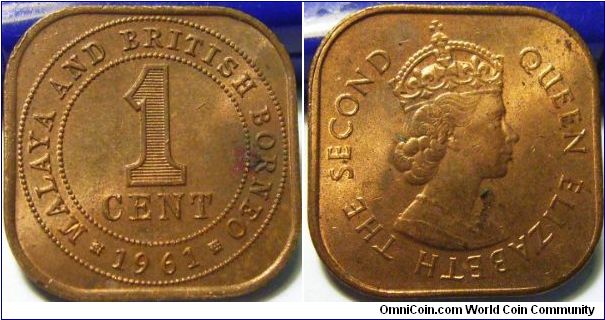
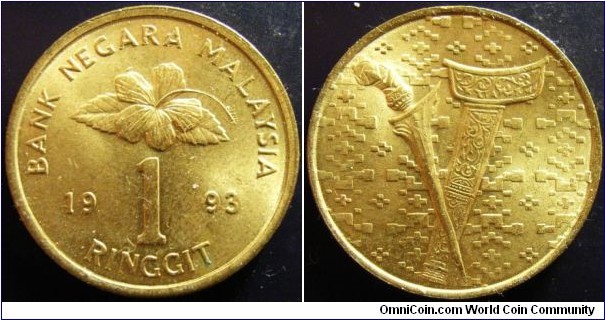
Please feel free to post more!
-
Happy birthday!
-
Edge looks too sharp in it's condition. I reckon it's edged later in it's life.
-
WOW. I'm not just impressed with your photography skills but with the animals that you got at your backyard. Very very nice variety of them!
-
Talking about similarities, this is something I discovered a while ago.
http://coinquest.com/cgi-bin/cq/coins?main_coin=13651
Interesting how this was struck around the same year as the cipher coinage.
http://http://www.m-dv.ru/monety-rossii-1700-1917/kid,14/mid,4/nid,29/types.html#
-
The reality of the 10% silver coins are that, despite their silver content, it's inefficient to melt them down to extract silver from them.
Hence, you will be hard pressed to find people that are willing to pay the silver content value of them, unless their numismatic value are worth more than their melt value.
-
I suspect a lot of them were removed from circulation either by overstriking them or melting them down within 2 decades.
These were emergency coins afterall and I presume they were not very popular because of their history.
http://pierre-marteau.com/wiki/index.php?title=Money_%28Sweden%29
-
BKB, you reminded me of this coin that I was looking for.
I'll have to pass...
-
It's definitely a proof restrike, struck in 1988. Still a nice coin to be honest.
-
I guess this can happen to anyone and it might be a lesson to learn.
Just a while ago, I lost my job and it's only recently that I found a job that paid me pretty well. To celebrate the moment, I bought a few coins that I have been hunting for years. These coins rarely appear even in auction houses.
As you may imagine, they aren't cheap. All of them were bought online and I really never had much trouble buying coins online. Yes, I know you can start talking about the risks etc but we'll put that aside for now. There's no local coin dealer here and the nearest I have to go to is probably at least 2 hours of driving and 5 hours of flying. Not an option. I've been buying a fair amount for the past decade and it has never got to this point.
A couple of coins came out to be counterfeits as they had signs of pitting. Sent a rather unhappy email to the seller which he obliged to return my money as soon as he receives them. I sent them back by registered mail and the mail "conveniently" goes missing. This was a big eye opener for me. I'm still at the stage of writing a few "angry" emails as this is not acceptable.
Another one just arrived today and this wasn't really obvious until I weigh it. Underweight by 0.2 grams and I thought this was unusual. Picked two other coins from other years and turns out this coin was smaller by a good mm or so. Plus when I looked at the edge carefully, it was polished and it showed signs of a seam. Alas, it cannot be genuine.
I guess the moral of the story is that you always need to be at the top of the game. It's your money that you are spending so you want to make sure that you have the real deal. Thankfully all of them had easy tell signs of counterfeits unlike a couple of the super counterfeits that I have in my collection. I was actually surprised as both sellers had good feedbacks. Unless I happened to look for something too obscure or unlucky, there could be no telling how many others were stung in the same process.
In short - always check what you get. -
It's toning from storage. Happens more often in areas with high humidity and temperature.
-
A lot of these were hoarded as the silver price rose. These were only struck in 1966 for circulation (there exist rare trial coins from other year which I can't remember off the top of my head) Hence you can find them in decent condition as well as in good prices. I was able to pick one up in similar condition for 12 dollars or so a while back when silver price was on the higher side.
-
This is the number: 266,480,000
266.5 MILLION. I personally think this number is staggering unless you beg to differ.
-
Bought these two coins but thought I'll ask the expertises here.
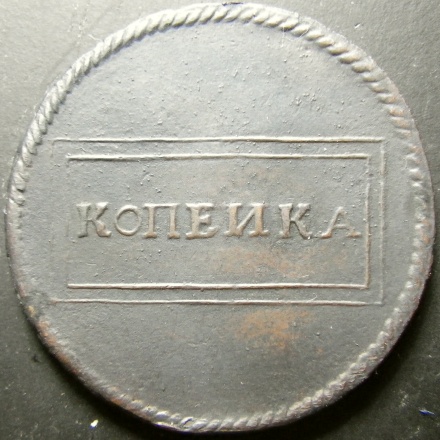
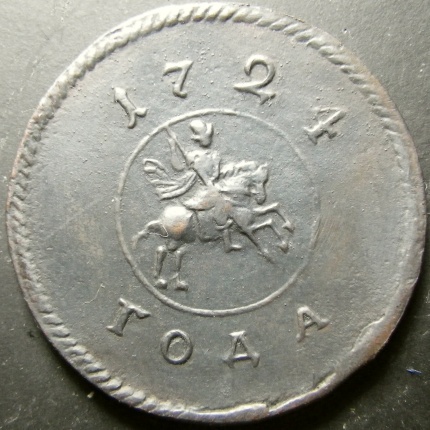


1724 1 kopek weighs 6.80g and 1788 TM 2 kopek at 16.78g.
Better photos can be found here http://gxseries.com/dump/
Need to take better photos of the edge as they didn't turn out to be too great.
What do you think?
-
I picked up a rather interesting old coin book published by the Bank of Korea dated around 1970s and this book really astounded me in many ways - books that was published in the early 2000s look really pale in comparsion compared to what was in this book.
The topic of discussion will be limited to just nickel copper coin for the moment. Nickel copper coins, when introduced in the late 1800s, was an idea to reduce the amount of silver used for coinage, as well as creating durable coins to last for a long period of time.
However this caused big mistrust in the public in particular China and Korea where gold, silver and copper coins were the standard (for a short period of time).
In Korea when nickel copper coins were first introduced in 1894 (yes, I know there are coins dated 1892), this caused an anxiety within the public as they did not know if the value would collapse. Bear in mind during the mid 1800s, Korea was facing a huge devaluation of her currency as the government melted down old currency and made coin alloys with cheaper metals, causing chaos within the public. (this to be covered one day in my website)
This is the coin in discussion:

When the Japanese mint, Osaka overtook the operations from Korea, a discree was made to remove old coins from circulation. This caused a huge panic within the public. They changed as much as they could and this was mainly 1/4 yang, 5 fun and 1 fun. Nickel copper coins were officially declared as non legal tender in 1906.
The next generation of nickel copper coin was struck in Osaka Mint in 1905.
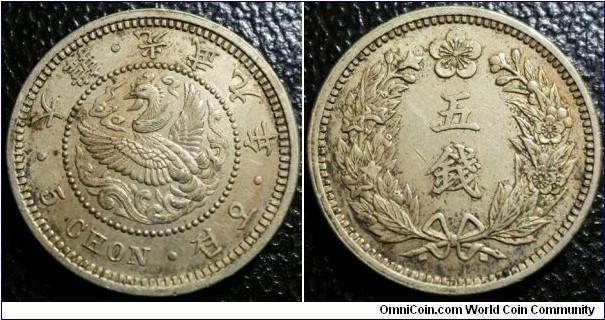
However in November 1908, circulation of nickel copper coins were prohibited. As of why, I suspect the value of nickel copper was essentially worthless scrap metal wise. This is interesting as Osaka mint has supposedly struck 4 million coins in 1909 according to the Japanese mint record. Korean catalog decides to not include this mintage figure. This is a really rare coin if you can find one. The final straw of these coins came in May 1909 where the government decided that such coins are not to be used for payment for taxes and public imposts by December 1909.
Now this is the challenge. There are no mintage figures for coins struck for 1892 to 1901. Mintage for 5 chon coins are as follows:
1905: 20 million
1907: 16 million
1909: 4 million (mostly melted down)
According to the references that I have, I am not aware of mintage figures of nickel copper coins from 1892 to 1901. 1899, 1900, 1901 nickel copper coins are extremely rare and expensive - this could be one of the world's most expensive nickel copper coins that ever circulated as I suspect many would have been melted down.
Now, guess how many of such beautiful coins were melted down "officially". The figure may surprise you.
-
I think we should take this from a different point of approach. I'm suspecting that metal values at a certain time in history played an important role in determining the fate of such coins. This is particularly true for platinum and copper coins. I cannot say with much confidence with gold and silver but I suspect it's somewhere along the lines.
-
Found this one:
This 15 kopek has been reedged twice
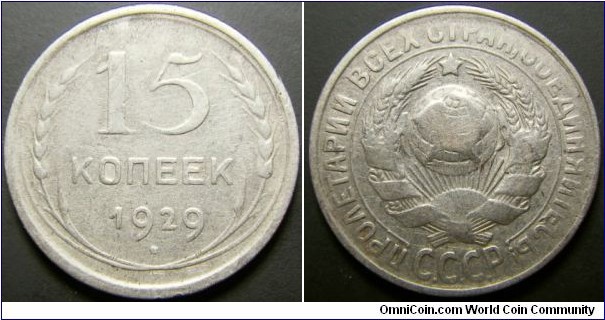
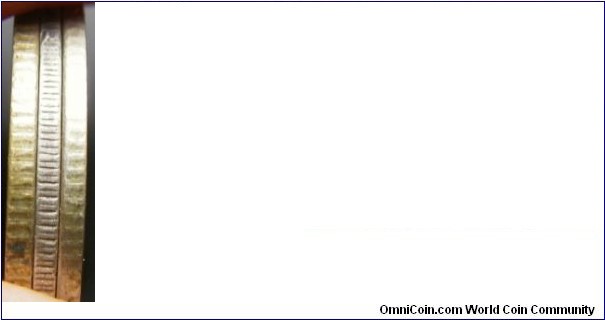
Another one:
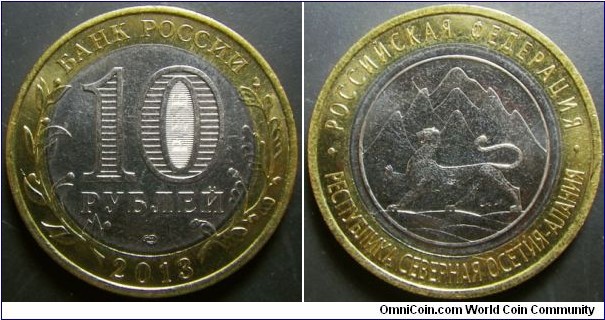

-
Nice coin Alex. Turns out I had a bit more poltina that I forgot to post or bought them after this post.
Overdate and reengraved mintmaster
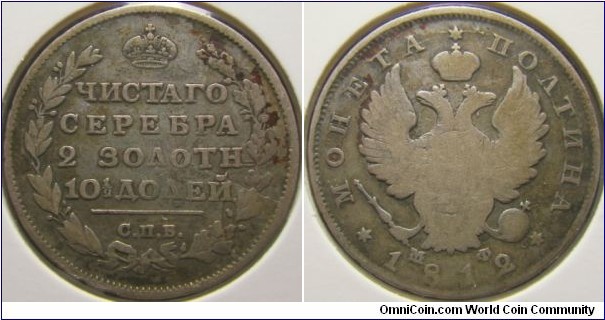

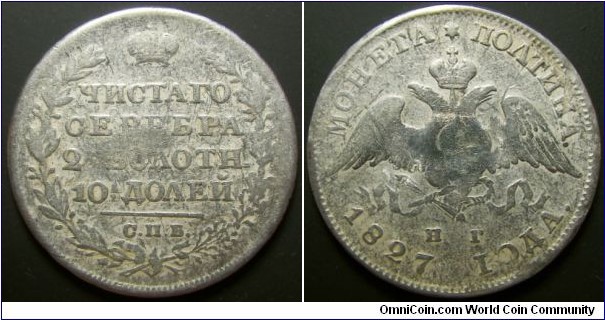
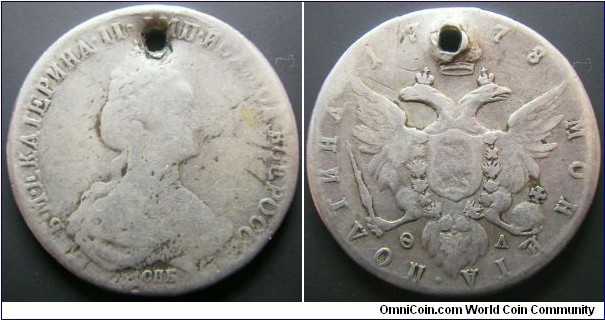
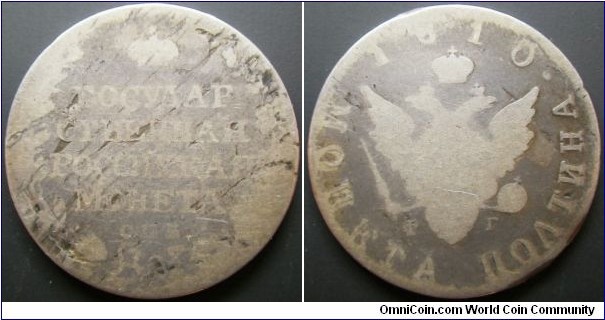
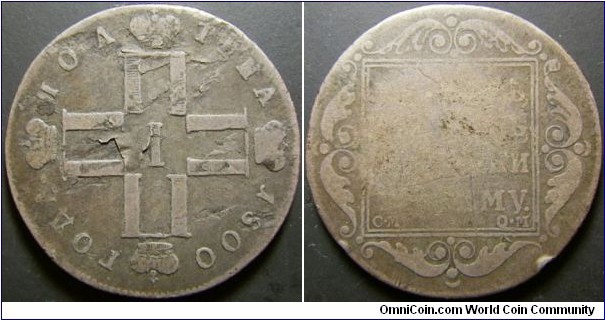
-
I remember having two unusual error edging with 1 ruble (1830s?) and a 1835 1.5 ruble - 10 zlot coin in my collection.
From memory, the ruble coin had some unusual indent and the 1.5 ruble coin had its edge re-edged (very minor). Have to look for them.
The biggest error edging that I can think of right now is the 2013 North Ossetia 10 ruble bimetal coin.
-
squirrel - a nice coin. Looks better than mine. extant4cell - yours show the underlayer very clearly. I like it.
Your 1759 denga looks like it's an overdated 1759/7. Not too sure if you noticed that.
 Denga coins were supposedly overstruck over 1762 1 kopek coin but I haven't found such examples yet.
Denga coins were supposedly overstruck over 1762 1 kopek coin but I haven't found such examples yet.There was a 1742 (?) grivnennik that was overstruck on a cutout ruble coin (!) and I thought that was really wild. Many thought it was struck over an older 10 kopek but after looking at the underlaying text in details, I think we came to an agreement that it was a ruble coin to start out with. I forgot to save pictures of it but I hope someone here did - I posted the link a while back and can't find it

-
Reminds me of this coin that I have. Take a note of how slanted the line is compared to the rest of the text.
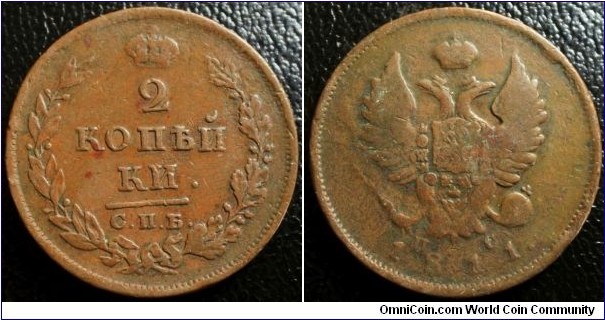
-
Of course!
 This is a coin that I bought a while ago Not too sure if I showed it but it fits within the theme of overstruck coins.
This is a coin that I bought a while ago Not too sure if I showed it but it fits within the theme of overstruck coins.1788 1 kopek (no mintmark) over 1762 2 kopek
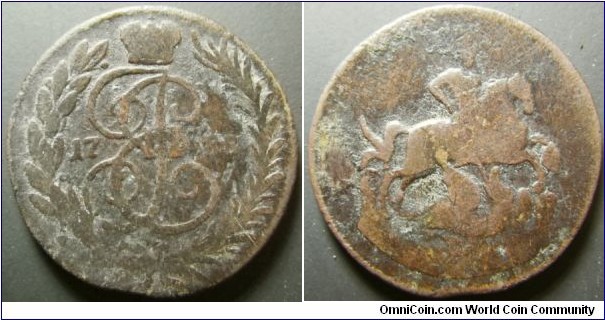
I know the details are just too hard to see but it's definitely an overstrike. I'll have to take better photos when I get the chance.
While overstruck 5 and 2 kopek coins are common, I believe 1 kopek and denga are on another scale. Maybe understated, maybe not. Maybe someone can post a better example?
Will post the tougher coins when they come in. I don't think I'll do any more big purchases until I offload some of the duplicates.


1788 (2 or 5 kopecks) TM overstrikes - do you know any?
in Russian Coin Forums
Posted
I had to strip off the verdigris on this coin. This was previously cleaned and thought it would be better if I treated it before verdigris started to chew more off of the coin.
Nevertheless, I am happy with it as I am struggling to upgrade this coin.